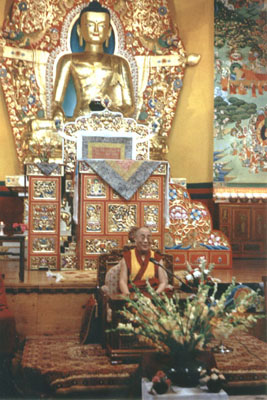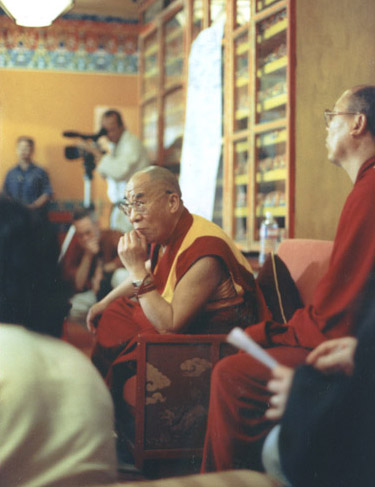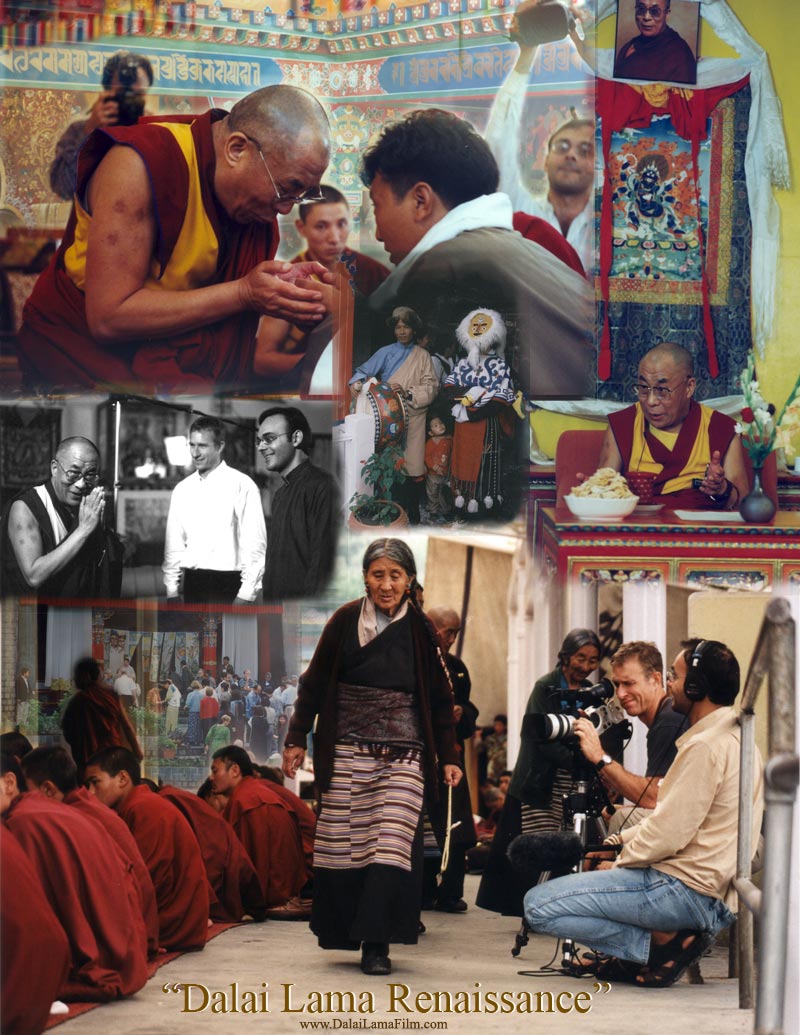|
|
|||||||||
|
Serving humanity and the world through the arts |
|||||||||
|
a California 501(c)(3) non-profit foundation |
|||||||||
|
|
|||||||||
|
"Dalai Lama Renaissance" Feature Documentary: |
|||||||||
|
(The dedicated and most updated website for the "Dalai Lama Renaissance" documentary can be found here: www.DalaiLamaFilm.com) |
|||||||||
|
|
|||||||||
|
Introduction: At the edge of the Millennium in September 1999, The Dalai Lama of Tibet invited 40 of the West’s leading, most innovative thinkers in their respective fields to his residence tucked away in the Himalayan mountains of Northern India to discuss the world’s problems and how we can solve them. What transpired was unexpected and powerful, and was captured by an 18 person, 5 camera film crew. The Wakan Foundation for the Arts took its 18 person crew to India and shot more than 140 hours of video footage during the week-long meeting and exploration of the future of mankind-- enough gripping and beautiful footage to make a powerful and cinematic documentary. The resulting feature-length documentary, “Dalai Lama Renaissance,” has already received a very positive response, and will be widely released and distributed this fall.
Summary of the Documentary: At the cusp of the new Millennium, forty visionaries and innovative thinkers left the United States with high expectations of changing the world. They set off for India to meet with His Holiness the Dalai Lama at his residence at the mystical foothills of the Himalayas. Expectations were very high for this five day series of discussions about how to change the world and solve some of its most crucial problems by creating solutions from a "synthesis" of their varied disciplines. Artists, scholars, physicists, astronomers, business leaders, doctors and authors all longed to meet and speak directly with the Dalai Lama. His Holiness became a mythic figure who could and would transform each person and bring about the kind of alchemy and action that all expected to occur. All participants, including the Dalai Lama, were taking the gathering very seriously and holding high hopes of affecting real positive change in the world on a profound level. What happened surprised them all. After arriving in India, their "journey" (both inner and outer) began. It began with a chaotic and grueling journey through the spirited culture and colorful land of India, to Dharamsala, at the foothills of the Himalayas, where the Dalai Lama leads the exiled Tibetan People. These western “Synthesis” participants, and through them, the audience, became immersed in the Third World and Eastern culture of India, and saw immediately the differences between India and the West. The clambering and rich and crowded yet intimately friendly sights, smells, and sounds of the culture caused them to reflect on the different values of community, home, family, money, material possessions, and the idea that wealth is not about material wealth, it is truly about happiness and interactions with and love of people. Participants faced financial poverty directly and in a way that they had never seen in America, and this caused them to face the issues of how the people of India and the Third World lived in comparison to life in the West. Disorganized, disoriented and exhausted, expectations began to crash as the tired visionaries arrived in Dharamsala- the Dalai Lama’s home. Then, as the dialogues began, dissent began to occur. Silent observers, who were there to witness the process of the dialogues, complained that they were not fairly involved. Other conflicts ensued. The highly organized and planned structure of the dialogues began to break down even before the Dalai Lama arrived. It wasn't until the first arrival of His Holiness‑‑ in an enormous Tibetan processional ceremony‑‑ that the participants began to realize that they were in an extraordinary realm of spirit and culture. The transformations began to occur within everyone as the presence of His Holiness began to deeply affect each person. As the participants began their dialogues, egos again flared, dissension heightened, dialogues became heated and the structure unraveled. By the second day, the participants of the conference struggled to unify their disciplines, message and intentions to present a unified proposal to the Dalai Lama. Despite the spectacular Tibetan setting which enveloped them with exotic dance, music and ceremony, the participants struggled with their conflicting western expectations and points-of-view. Each day, the Dalai Lama's wise and patient presence reminded everyone what they were truly there for‑‑ to create “synthesis” and bring about more compassion and happiness in the world through each particular individual’s concrete action. The Tibetan culture was a powerful and constant reminder that not only were they in a very different land, but that there were real life issues to be dealt with such as the thousands of Tibetan refugees all around them. By the fourth day a synthesis began. A proposal to apply the ethical and spiritual principals from each discipline to the concrete task of applying pressure on China to allow for a free Tibet was put forth. This proposal launched a new energy and the logistics of economic divestment were discussed by leaders who had begun the same divestment policy that led to the end of apartheid in South Africa. In spite of his sensitive and strained relationship with the Chinese government, the Dalai Lama became very interested, and for the first time, and in a historic statement, publicly agreed to seriously examine the possibility of an international boycott of Chinese goods. As this plan of action took shape, the Dalai Lama kept reminding everyone that their main purpose was not China but rather to create "synthesis" and returning from the meeting and apply the insights that they had received from the “Synthesis Dialogues” and implementing them in a very real way into each participant’s culture and field of discipline. He cautioned that positive change meant not harming anyone, even the thousands of Chinese that may be affected by such an economic boycott. A synthesis began to occur. In the presence of the Dalai Lama, a profound sense of caring and compassion overtook the dialogues and the participants began to forge visions of beneficial action for humankind and how they might implement those visions in the world. Egos dropped away and an incredible transformation occurred. Other serious problems of the world were spoken about in groups, and some solutions to these problems were devised. It was not the kind of transformation that anyone had expected. It was a very personal transformation and a profound inspiration received at the hand of the Dalai Lama. He had been teaching and grounding the Synthesis participants every step of the way with his simple message that the most important thing in the world is to realize that all people want happiness and that the way to achieve this is to instill "secular ethics" with compassion as the basis. All action in the world must come from this basic foundation. On the final day of the "journey," each participant gave a gift to His Holiness and received a sacred blessing. Together, as a group, the participants were then led through a sacred Buddhist ceremony in which they pledged to work for all time to bring peace and compassion to the world. They returned to the United States changed on a profoundly deep personal level, realizing that although tumultuous and often difficult, the "Synthesis Dialogues" event was a first step in ushering in a new era of greater consciousness and increased understanding. The participants agreed to take their particular insights about how to solve the particular problems related to their field and inspire and enact change after returning to America. (The dedicated film website for the "Dalai Lama Renaissance" documentary can be found here: www.DalaiLamaFilm.com)
|
|||||||||





